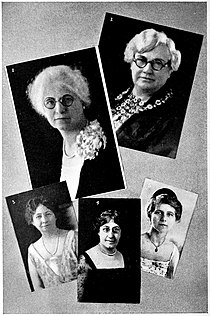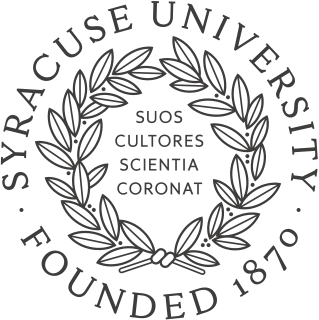Arizona State University at the West Campus is one of five university campuses that compose Arizona State University (ASU). The West campus was established by the Arizona Legislature in 1984, and is located in northwest Phoenix, bordering the city of Glendale.

Sparky the Sun Devil is the official mascot of Arizona State University. Originally the ASU athletic teams' mascot was an owl, then became a "Normal". It was later changed to a bulldog in an attempt to make the school – Arizona State Teacher's College at the time – appear more in line with Yale and other universities that held a higher level of respect. The State Press, the student newspaper, ran frequent appeals during the fall of 1946, urging the Bulldog to be replaced by the new Sun Devil. On November 8, 1946, the student body voted 819 to 196 to make the change. On November 20, as reported by the Arizona Republic, the student council made it official. The following day, the first Arizona State team played as the Sun Devils. Two years later, alumnus and Disney illustrator Berk Anthony designed "Sparky", a devil holding a trident. Anthony is rumored to have based Sparky's facial features on that of his former boss, Walt Disney. Sparky is officially known as a "mischievous imp", with no other backstory than that.

The Arizona–Arizona State football rivalry, sometimes known as the Duel in the Desert, is a college football rivalry between the University of Arizona Wildcats and the Arizona State University Sun Devils.
Arizona State University Downtown Phoenix campus is one of four campuses of Arizona State University. It is commonly referred to as ASU Downtown. The campus, distinguished by its name, is located in the downtown area of Phoenix, Arizona.
The State Press is the independent, student-operated news publication of Arizona State University. In August 2014, it became an all-digital publication. It published a free newspaper every weekday until January 2013, at which point its print distribution was reduced to once per week. The editorial board announced that ASU Student Media will begin to focus on "a host of new digital products and special print products."

Tempe Butte is the official name of an andesite butte of volcanic origin, located partially on Arizona State University's Tempe campus in Tempe, Arizona. It is often referred to by locals as A Mountain, after the 60-foot-tall (18 m) gold-painted letter 'A' near the top. Another name for the area, used by the City of Tempe, is Hayden Butte.
Henry Grady Gammage was an Arizonan educator. He served as the president of Northern Arizona University from 1926 to 1933 and as the president of Arizona State University from 1933 to 1959. In 1958, he led Arizona State College’s victorious Proposition 200 campaign in the state legislature for a name change to Arizona State University. Gammage Auditorium at ASU was named in his honor.

The history of Arizona State University began March 12, 1885 with the founding of the establishment originally named the Territorial Normal School at Tempe. The school was founded after John Samuel Armstrong first introduced House Bill 164, “An Act to Establish a Normal School in the Territory of Arizona” to the 13th Legislative Assembly of the Arizona Territory. Instruction was instituted on February 8, 1886 under the supervision of Principal Hiram Bradford Farmer. Land for the school was donated by Tempe residents George and Martha Wilson, allowing 33 students to meet in a single room.
Goodwin Stadium was a stadium in Tempe, Arizona. It hosted the Arizona State University Sun Devils football team until they moved to Sun Devil Stadium in 1958, as well as the team for local Tempe High School until 1969. The stadium held 15,000 people at its peak and was opened in 1936. The first football game played was on Friday, October 3, 1936, when the Arizona State Teacher's College Bulldogs defeated California Institute of Technology 26-0. The last football game played was on September 20, 1958, when ASU beat Hawaii 47-6 in front of 19,000 fans.

The Palm Walk is a pedestrian mall located on Arizona State University's Tempe campus that is lined with one hundred and eleven Mexican fan palms. Running from the foot of the University bridge to the north, to the Student Recreation Complex to the south, the path runs for almost four-tenths of a mile. The path itself follows the old alignment of Normal Avenue, before it was incorporated into the expanding college's campus.
Arizona State University Tempe campus is the largest of four campuses that compose Arizona State University. The campus lies in the heart of Tempe, Arizona, about eight miles (13 km) east of downtown Phoenix. The campus is considered urban, and is approximately 642 acres (2.6 km2) in size. ASU's Tempe campus is arranged around broad pedestrian malls and is completely encompassed by an arboretum. ASU has an extensive public art collection, considered one of the ten best among university public art collections in the United States. Against the northwest edge of campus is the Mill Avenue district which has a college atmosphere that attracts many students to its restaurants and bars. ASU's Tempe Campus is also home to all of the university's athletic facilities.

Matthews Hall is a building on the Tempe campus of Arizona State University. Built in 1918, it was added to the National Register of Historic Places in 1985.

The President's House is a building on the Tempe campus of Arizona State University. It was built in 1907 to serve as the lodgings for the president of what was then known as the Tempe Normal School. It was listed on the National Register of Historic Places in 1985 and currently houses the Virginia G. Piper Center for Creative Writing, known as the writer's house.

Harry Kenneth Newburn was an American educator. He served as the president of various universities during the mid-20th century.

The ASU Foundation, officially known as the ASU Foundation for A New American University, is a nonprofit corporation created to support Arizona State University, located throughout the metropolitan area surrounding Tempe, Arizona. The ASU Foundation is one of five distinct nonprofit entities governed by ASU Enterprise Partners and its volunteer board of directors. Tax exempt under section 501(c)(3), the ASU Foundation raises and manages money through philanthropic efforts.

Harold D. Richardson was the acting president of Arizona State University (ASU) from December 1959 to the fall of 1960. He also served as ASU's academic vice president and held jobs in various school systems in Wisconsin and Illinois.
The 1905 Tempe Normal Owls football team was an American football team that represented Tempe Normal School as an independent during the 1905 college football season. In their seventh season under head coach Frederick M. Irish, the Owls compiled a 0–3 record and were outscored by their opponents by a combined total of 28 to 8. The team lost games to the Phoenix Indian School (8–17), Phoenix High School (0–5), and Tempe High School (0–6).

Cora Louise Boehringer was the first female superintendent of schools in Yuma County, Arizona and the first woman to be elected to office in the state. She has been called "the mother of the Arizona educational system". In 2008 she was inducted into the Arizona Women's Hall of Fame.














